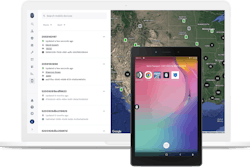
There are different schools of thought when it comes to enterprise software, and as broad, powerful applications make their way to market in the construction industry, contractor executive teams will see firsthand what they are.
A classical approach is to establish a billing relationship with a customer and then compete for a larger and larger share of their wallet over time by selling them more functionality to address additional business processes. Buy some software, and then if you like it, buy more — it seems to make sense.
But what if a contractor is running software from a single vendor for estimating, field productivity and safety but their telematics and maintenance solutions are not a good fit? Or what if a contractor has multiple divisions with different needs no single vendor can address, and portions of a solution from another vendor are therefore a better option for the contractor to meet their needs?
Enter the Composable Solution
Like most jargon in enterprise IT, the term composable solution or composable enterprise was coined by analyst firm Gartner. On its face, the term communicates the idea of an enterprise solution that is composed of multiple products rather than a unified, pure-play application suite from a single vendor.
The use of modern application programming interfaces (APIs) can facilitate handoff of processes between diverse software products from different vendors, helping to deliver this composable enterprise. Gartner thinks the future will take us even further towards composability as software vendors become API-first, meaning they build the product around the API and then API-only. At this stage, the product does not necessarily support end users with an interface, but rather provides microservices to the applications the end user is engaging with directly.
“By 2024, 20% of Global 2000 CEOs will report an increased appetite for risk and improved resilience, both attributed to modular business redesign,” the authors of Gartner’s ‘Becoming Composable: A Gartner Trend Insight’ state. “By 2024, the mantra for new SaaS will be ‘composable API-first and API-only,’ relegating traditional SaaS vendors as ‘legacy.’”
It will be a while before we see many API-only construction software offerings, apart from designated construction integration platform as a service (iPaaS) vendors like Agave or information services like Trimble DataXchange (formerly Ryvit) and standard pricing services like those from RSMeans, Spon’s Price Libraries or Trimble’s TRA-SER pricing service. But what we see happening at scale is construction software vendors coming to terms with the importance of APIs, and to the idea of yielding the right of way to others who can best complete a customer solution. Walls are out and wheels are in as construction technology vendors are realizing that maximizing value will work better than trying to maximize revenue—and that means working and playing with other vendors rather than trying to keep them out of the customer.
HCSS Doubles Down on its Partner Marketplace
When you think of a partner marketplace in construction software, you think of Procore, which has more than 400 partners in its marketplace. While the depth and functionality of the integrations with these partners varies, Procore becomes an iPaaS of sorts, leading the industry as a whole towards a partner-centric approach to construction software interoperability. Seeing this, Trimble is also eyeing the 30 partners that came with the Ryvit deal as a move toward partnerships playing a large role in interoperability between different products.
HCSS, the heavy construction software platform, is also making a concerted effort to build out its partnership community, has established a marketplace and is also opening its environment increasingly to partners to help speed integrations to market.
“Where we sit in 2023, we understand we are market leaders in our space,” HCSS Senior Product Manager-Partnerships Rateb Almasri told IRONPROS in a catchup call. “But technology is evolving so fast, we can’t do everything. But what we can do is partner with like-minded companies that are best in class and cater to our customers. We are better together at the end of the day.”
HCSS has been rolling out new partnerships at a rapid clip, with batches released in March 2023, including:
- A partnership with Onstation for location-based documentation essential to roadbuilders
- An integration with PipelineSuite software to streamline sending of bid solicitations, creating bidder lists and sending invitations
- An integration with Clue Insights, which aggregates data from multiple equipment management solutions to an enterprise view
The partnership with Clue Insights may seem odd given that Clue addresses many of the same functions as HCSS’ offerings like HCSS Equipment 360 or HCSS Telematics. But Clue Insights operates by the concept of a composable solution very well—it is designed to standardize data from multiple GPS-enabled asset management software a contractor may do into a common presentation and transactional layer.
“We announced our partnership with HCSS this week,” Clue Insights CEO Oded Ran said in an IRONPROS Deep Dive. “The challenge we are solving is that you have a customer that already has HCSS, maybe running Heavy Job or Equipment 360. But they may use a different telematics provider. That means they don’t have everything on one pane of glass.”
There are standards for equipment data, but in an IRONPROS Deep Dive, Clue Insights CEO Oded Ran said they were only a partial solution.
“Any company thinking that AEMP is a standard, well, it’s a standard that’s not standard,” Ran said. “You may find one brand of dump truck has a problem with a given version of the AEMP standard. So part of our day-to day-job is maintenance of these data pipes we know very well. If we are talking to a company with 20 assets, they don’t get this. But that contractor with 1,000 assets — they feel the pain.”
Clue Insights, Onstation, PipelineSuite — all illustrate Almasri’s and HCSS’s stated partner strategy and he is looking for more partners like them.
“I always want to think of the customer,” Almasri said. “We are looking for companies that complement us. And that has to do with more than functionality. We are a customer first company — 90 percent of our implementations are complete in 90 days or less. Our customer calls support and it picks up by the third ring. We offer money back guarantees. So yes, we are looking for companies that complement us on that front and from a solution standpoint they help us elevate the customer experience.”
Customer demand will help Almasri determine which partnerships to move to the top of the pile.
“I have an opportunity matrix to prioritize holes we want to fill,” Almasri said. “Drones are becoming more popular in our industries, and we may do something there. Our customers want to optimize and increase the efficiency around bidding for new jobs. But we will also see continued growth around our current enterprise resource planning (ERP) integrations. Our customers can feel confident that when they purchase Heavy Job or Equipment 360, we can integrate with everybody. We have no preferred vendor, but if you bring your ERP, we will make it work.”
Getting to this partner-focused approach did not happen overnight — it required HCSS to evolve its products to integrate easily and support partners with technology.
“What we focused on over the last year is building out the infrastructure for a marketplace,” Almasri said. “We want to be able to drastically improve the onboarding process for partners and have launched an app portal where they can look at our APIs, read up on them and understand what data they can pull out of HCSS. They can get self-service in that fashion and start testing out our APIs, provision their own sandbox environment and edit their marketing collateral and determine how it is displayed in the HCSS marketplace.”
The storefront for partners should streamline things for other software vendors, but the customer experience and the speed with which new integrations can come to market are also attributable to years of building out a robust collection of RESTful APIs.
“If you were to ask me if we were ready for this in 2019 I would not be confident in our message,” Almasri said. “But with the infrastructure improvements we have made that over the last three to four years, it is a lot easier for us to onboard partners and focus on integration. For some larger companies that have their own development team that want to use data out of HCSS in their homegrown system, they can do that fairly easily now. Before, it was an incredibly long.”
Trackunit , Others Go Platform
GPS-enabled asset management leader Trackunit is also preparing a partner marketplace, and giving both partners and customers more robust access to the platform for development and integration.
“Right now, we are in the midst of launching the Trackunit Software SDK, as well as the Trackunit Marketplace later this year,” Trackunit Vice President of Product David Swan told IRONPROS at our in-booth briefing at CONEXPO.
Because Trackunit goes all the way up market, some of their customers have deep enough IT benches to take on substantive work creating their own Trackunit environment.
“We are the primary connectivity provider to most of the largest construction fleets in the world,” Swan said. “If you go down that list of the largest contractors, we are basically there all the time, and a lot of that has to do with our platform approach. These are huge businesses, and they are so deep into the problem space in a way we as an IT or connectivity provider can never be. But we give them a space build on our platform and guide the solution to where it needs to be to solve their specific business problems.”
Trimble had earlier launched Trimble Construction Cloud at its Dimensions conference in November of 2022. Apart from enabling use cases like live data and model sharing, a common data environment to connect Trimble and non-Trimble solutions and the Trimble Development Portal.
Autodesk meanwhile had already built its Autodesk Cloud and Autodesk Docs solutions on top of Forge, which also serves as a development sandbox where independent software vendors (ISVs) and system integrators that are part of the Autodesk ecosystem can develop complementary applications.



















